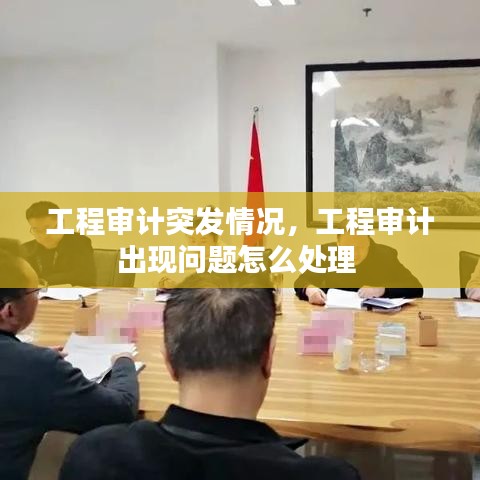<!DOCTYPE html>
<html lang="en">
<head>
<meta charset="UTF-8">
<meta name="viewport" content="width=device-width, initial-scale=1.0">
<title>Engineering Audit Unexpected Situations</title>
</head>
<body>
<h1>Engineering Audit Unexpected Situations: Navigating the Unpredictable</h1>
<h2>Introduction to Engineering Audit</h2>
<p>
Engineering audit is a critical process in the construction industry, ensuring that projects adhere to the specified standards and regulations. It involves a thorough examination of construction projects, identifying any deviations from the approved plans, and assessing the financial and operational impact of these deviations. However, as with any complex endeavor, unexpected situations can arise, posing challenges to the audit process.
</p>
<h2>Understanding the Nature of Unexpected Situations</h2>
<p>
Unexpected situations in engineering audits can be broadly categorized into technical, financial, and regulatory issues. Technical issues may include unforeseen site conditions, design errors, or material deficiencies. Financial challenges might arise from cost overruns, delays, or changes in funding. Regulatory issues could stem from changes in local or international laws, which may impact the project's compliance status.
</p>
<h2>Impact on the Audit Process</h2>
<p>
When unexpected situations arise during an engineering audit, they can significantly impact the audit process. Delays in the audit timeline may occur as the auditors gather additional information or re-evaluate their approach. The scope of the audit may need to be expanded to address new issues, which can increase the complexity and cost of the audit. Additionally, the credibility of the audit findings may be questioned if the auditors are unable to provide a comprehensive analysis of the unexpected situation.
</p>
<h2>Managing Technical Unexpected Situations</h2>
<p>
Technical unexpected situations require a rapid and precise response. Here are some strategies to manage such situations:
<ol>
<li><strong>Immediate Assessment:</strong> Conduct a thorough site visit to assess the extent of the issue.</li>
<li><strong>Expert Consultation:</strong> Seek advice from specialists to understand the implications and potential solutions.</li>
<li><strong>Documentation:</strong> Document all findings and discussions meticulously to maintain a clear record.</li>
<li><strong>Adjustment of Plans:</strong> Modify the construction plans or procedures to address the issue effectively.</li>
<li><strong>Communication:</strong> Keep all stakeholders informed about the situation and its resolution.</li>
</ol>
</p>
<h2>Addressing Financial Unexpected Situations</h2>
<p>
Financial unexpected situations can be particularly challenging, as they often involve budgeting and cost management issues. Here's how to tackle these challenges:
<ol>
<li><strong>Cost Analysis:</strong> Conduct a detailed cost analysis to identify the exact financial impact of the situation.</li>
<li><strong>Cost Control Measures:</strong> Implement cost control measures to mitigate further financial loss.</li>
<li><strong>Re-negotiation:</strong> Engage in discussions with suppliers and contractors to renegotiate contracts or terms.</li>
<li><strong>Financial Planning:</strong> Update the financial plan to reflect the new realities of the project.</li>
<li><strong>Compliance Review:</strong> Ensure that any financial adjustments comply with the project's budgetary constraints and regulatory requirements.</li>
</ol>
</p>
<h2>Regulatory Unexpected Situations</h2>
<p>
Changes in regulations can have a profound impact on engineering audits. To manage these situations effectively:
<ol>
<li><strong>Staying Informed:</strong> Keep up-to-date with all relevant regulatory changes.</li>
<li><strong>Compliance Review:</strong> Conduct a comprehensive review of the project to ensure compliance with the new regulations.</li>
<li><strong>Documentation:</strong> Update all project documentation to reflect the new regulatory requirements.</li>
<li><strong>Expert Consultation:</strong> Seek legal and regulatory advice if necessary.</li>
<li><strong>Communication:</strong> Inform all stakeholders about the impact of the regulatory changes and the steps being taken to address them.</li>
</ol>
</p>
<h2>Conclusion</h2>
<p>
Engineering audit unexpected situations are a testament to the unpredictable nature of construction projects. By being prepared, having a robust contingency plan, and maintaining open communication with all stakeholders, auditors can navigate these challenges effectively. While unexpected situations can be daunting, they also provide opportunities for improvement and learning, ensuring that future projects are better managed and executed.
</转载请注明来自上海天亮了废旧物资回收有限公司,本文标题:《工程审计突发情况,工程审计出现问题怎么处理 》
百度分享代码,如果开启HTTPS请参考李洋个人博客














 沪ICP备2023032433号-1
沪ICP备2023032433号-1
还没有评论,来说两句吧...